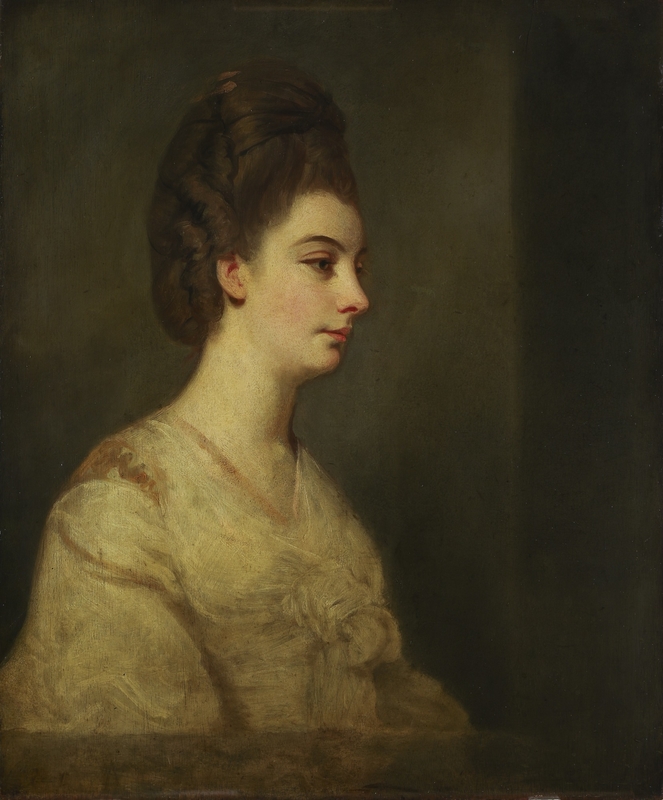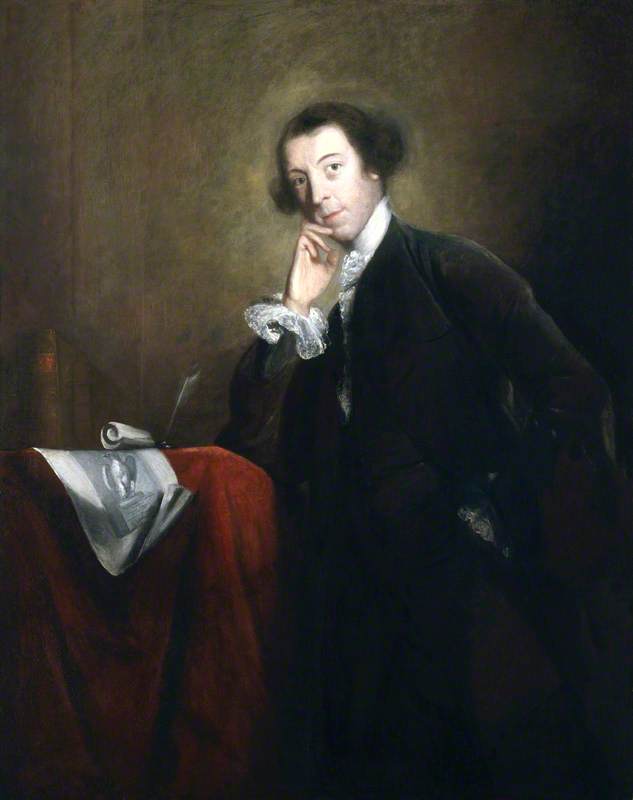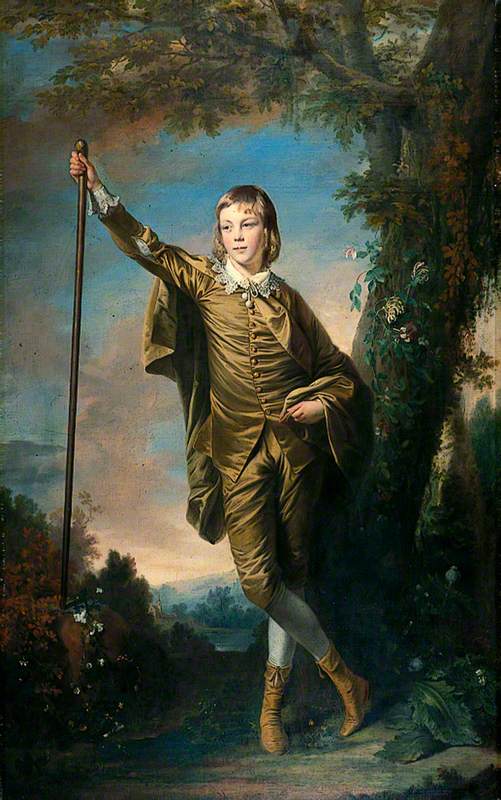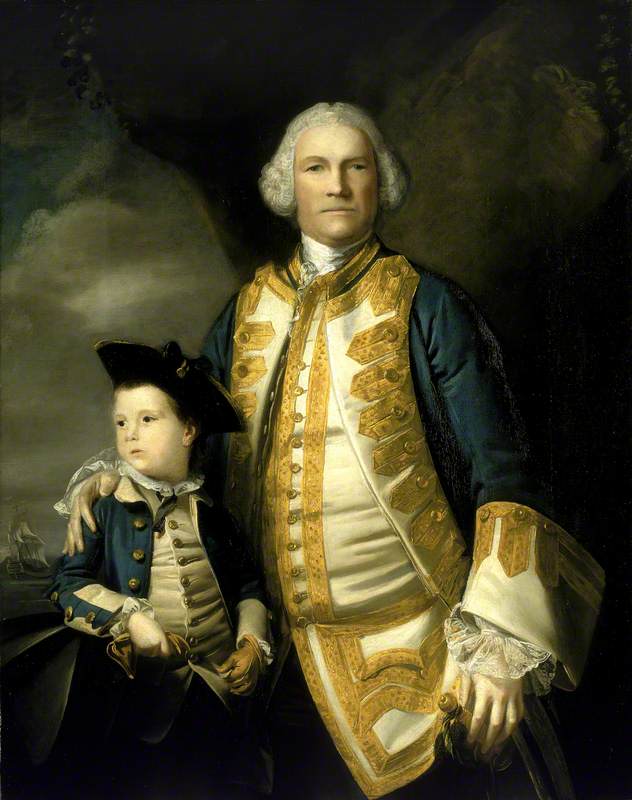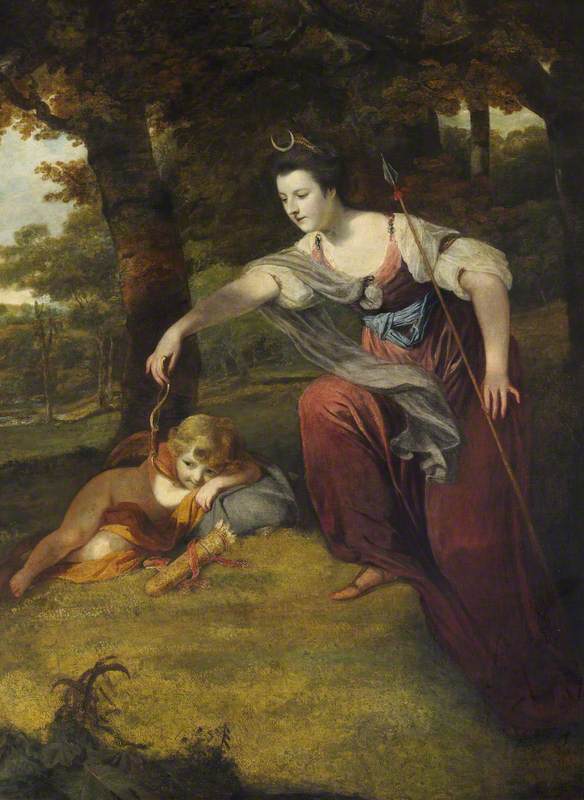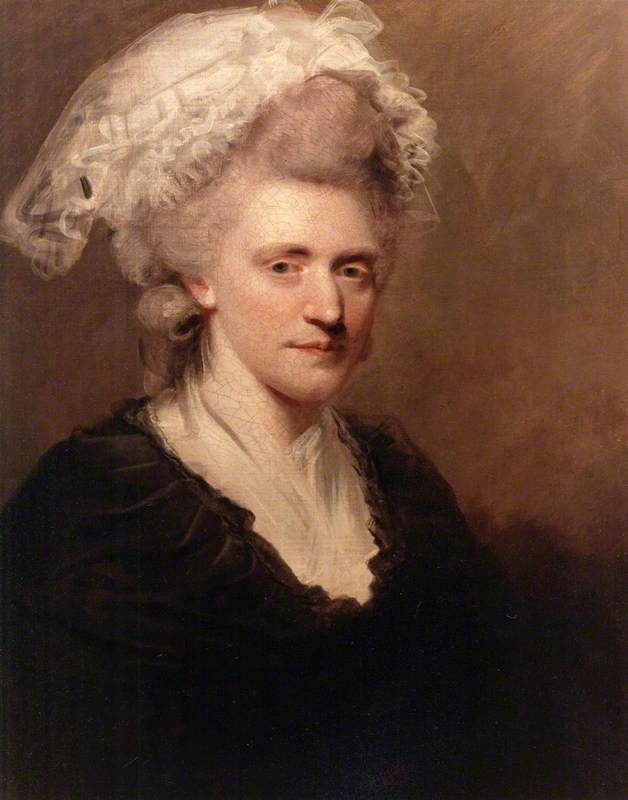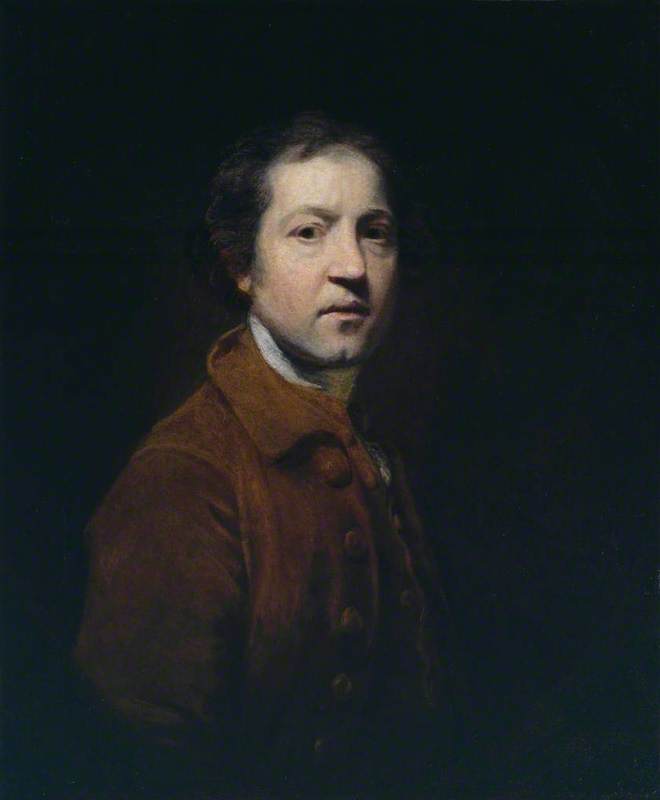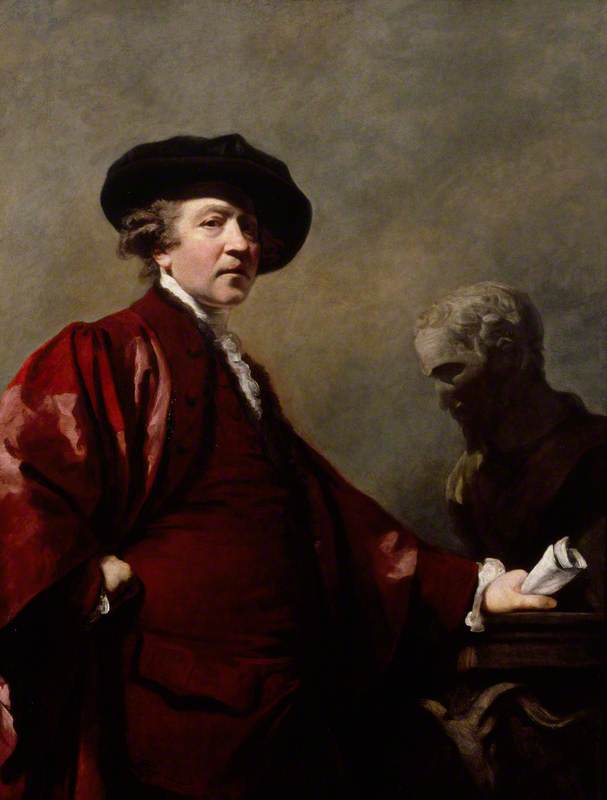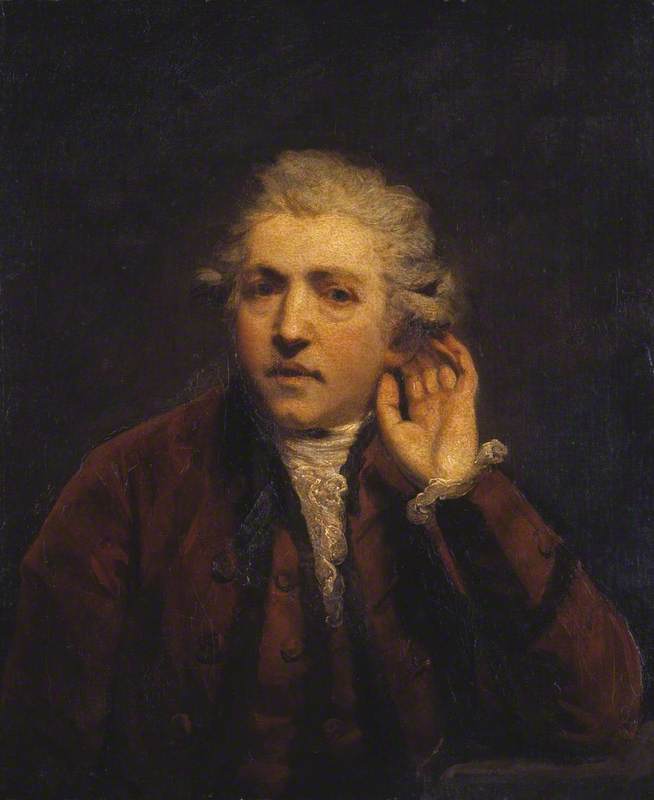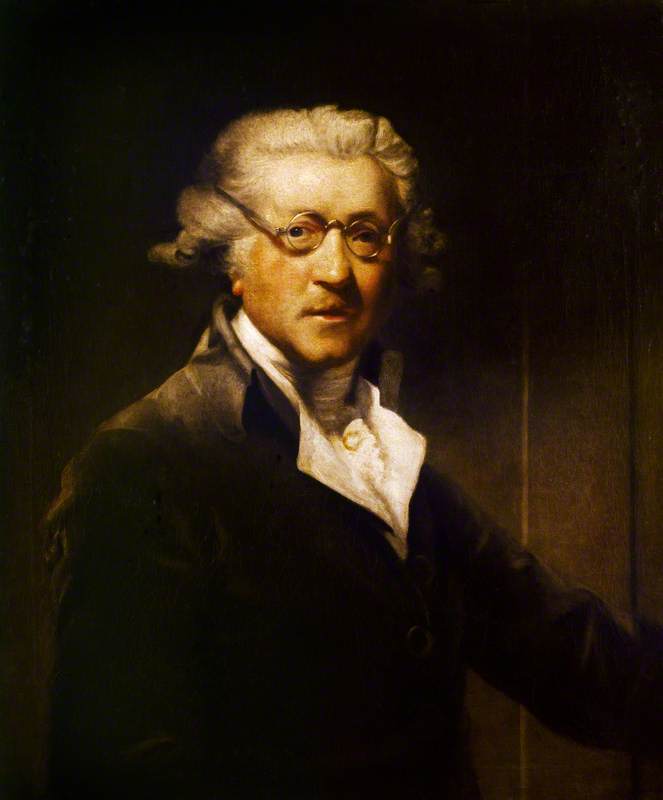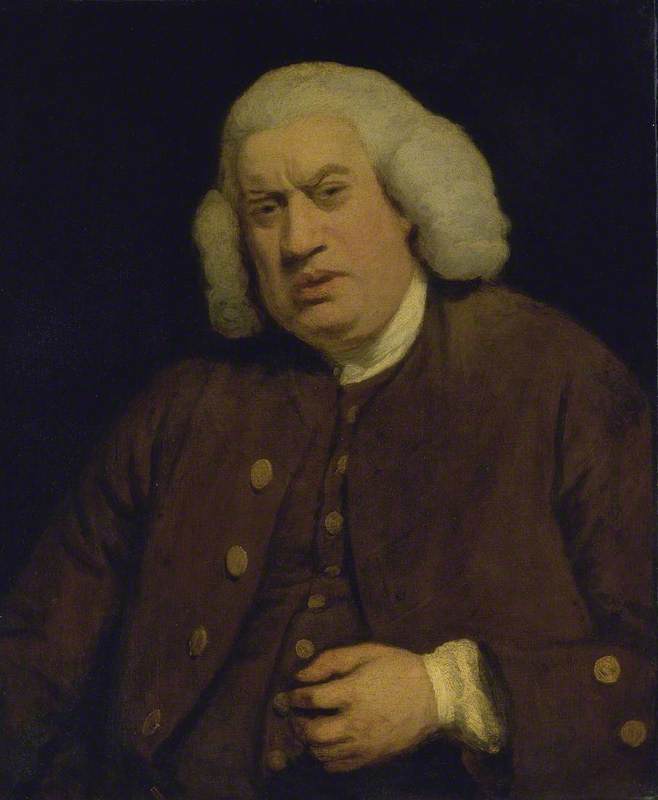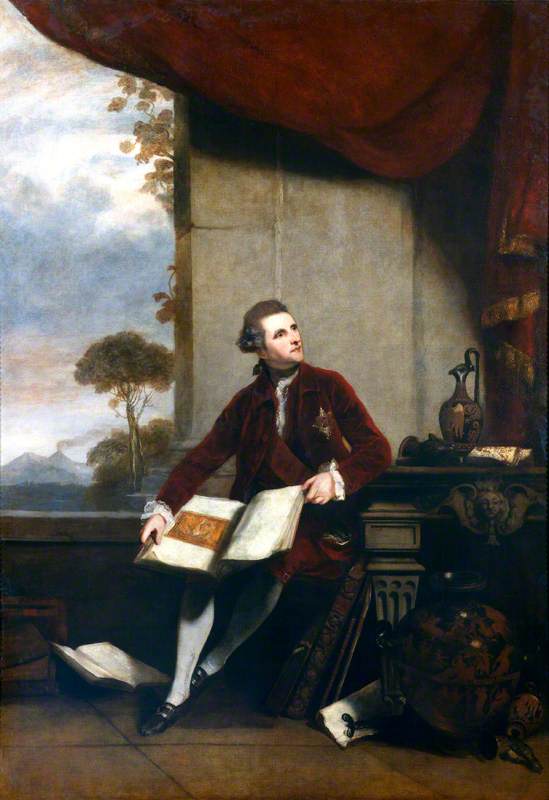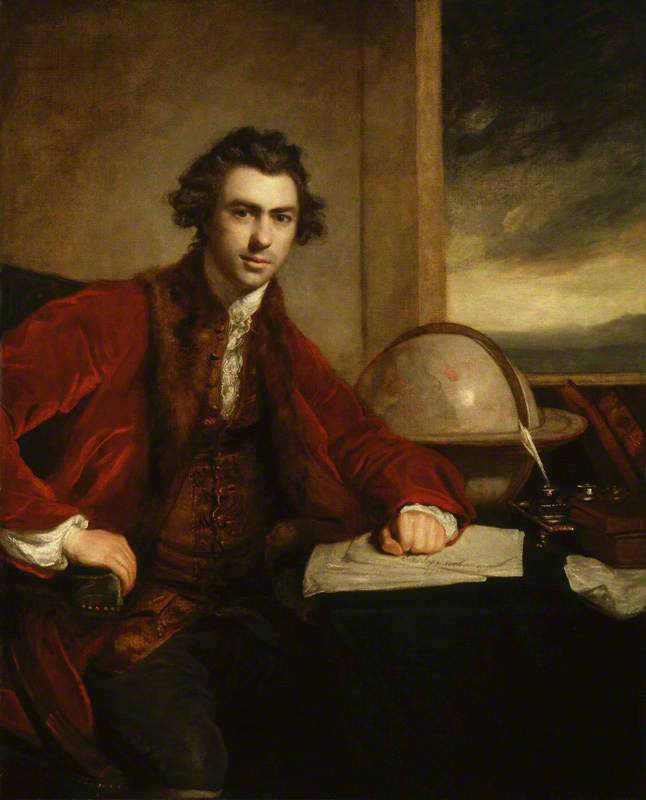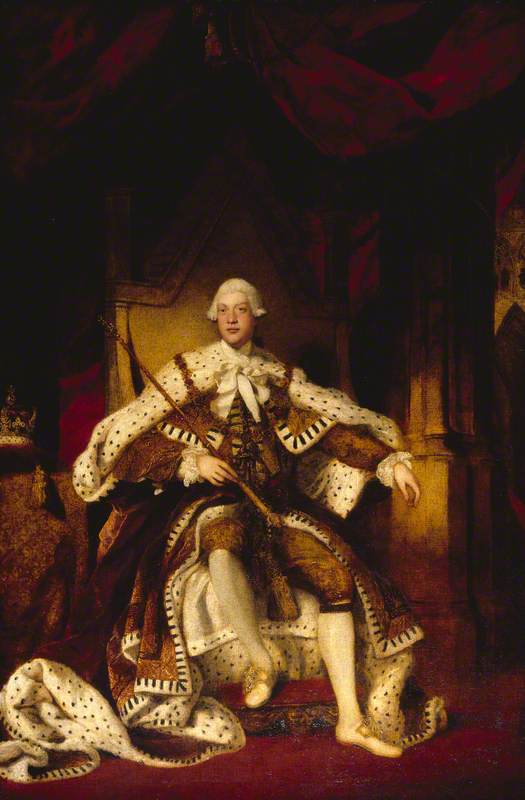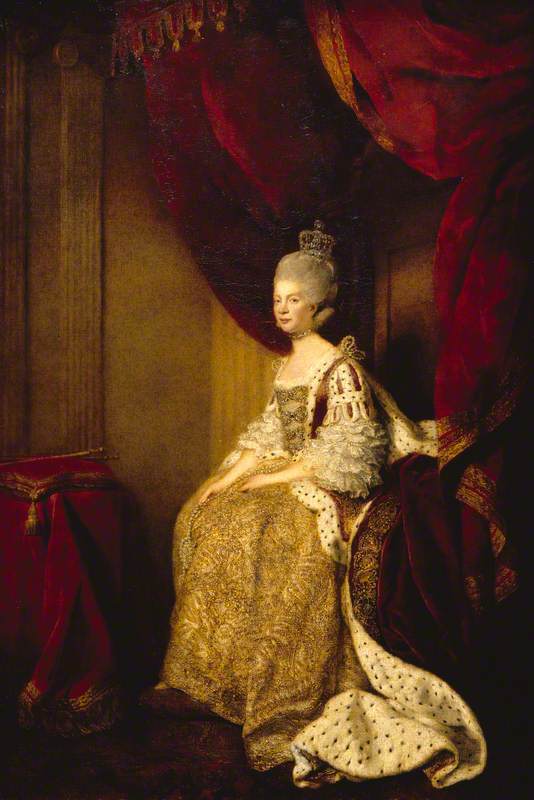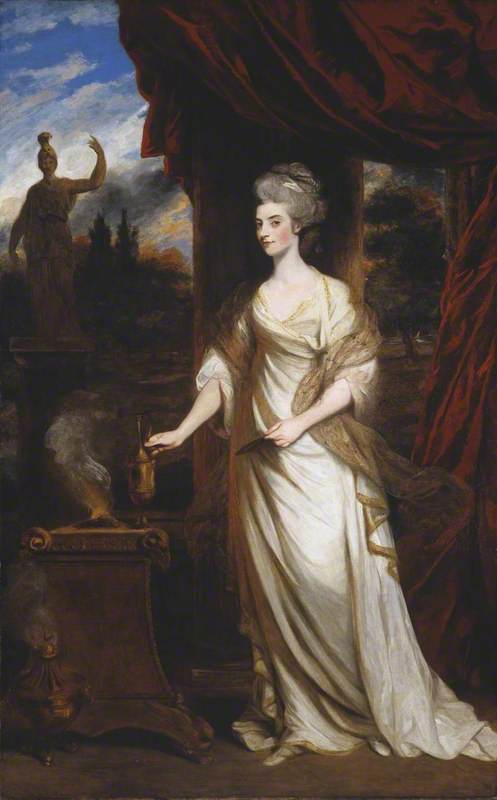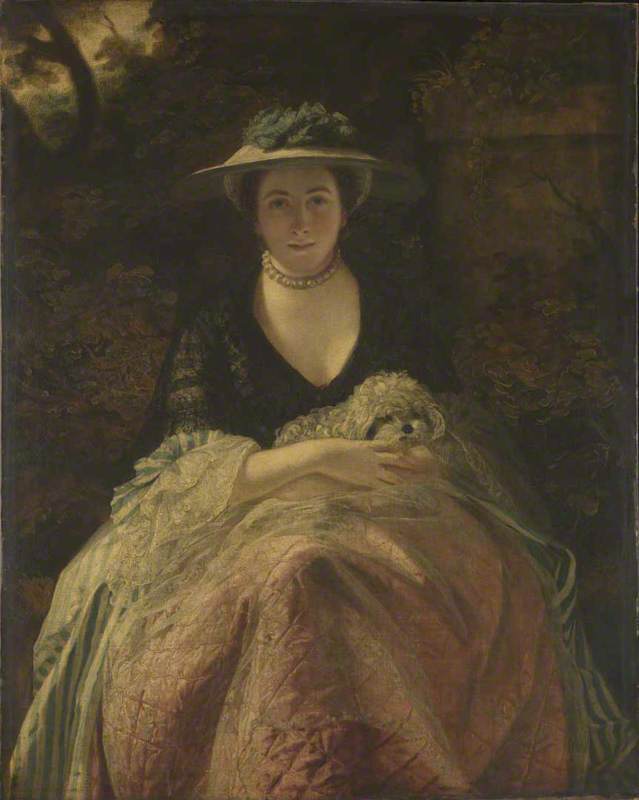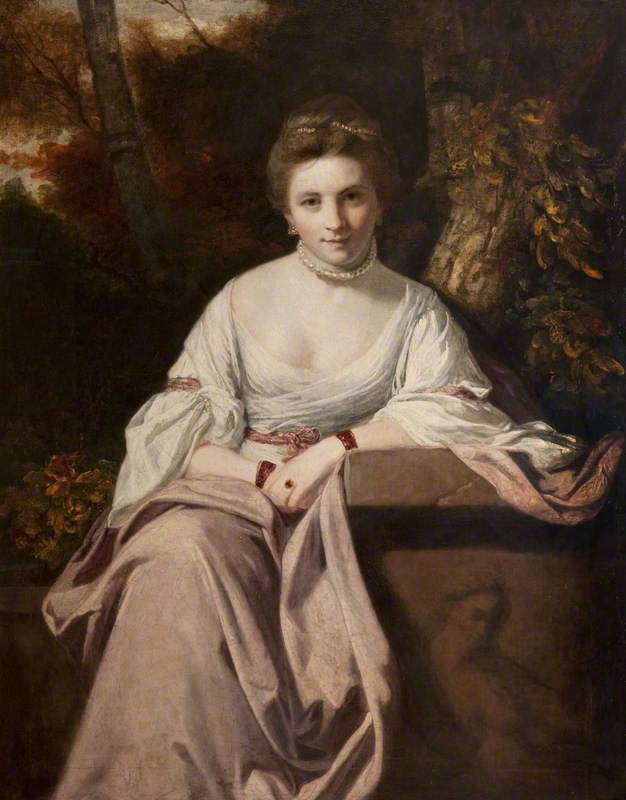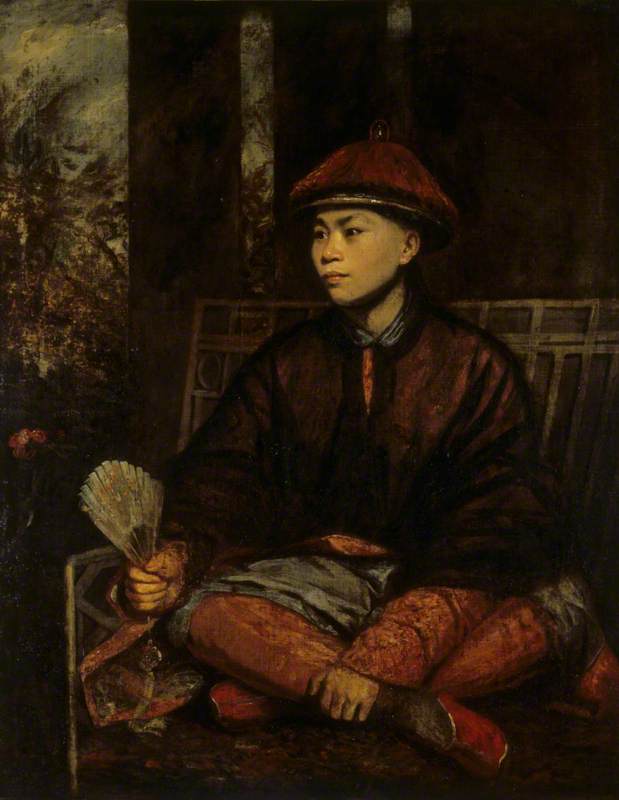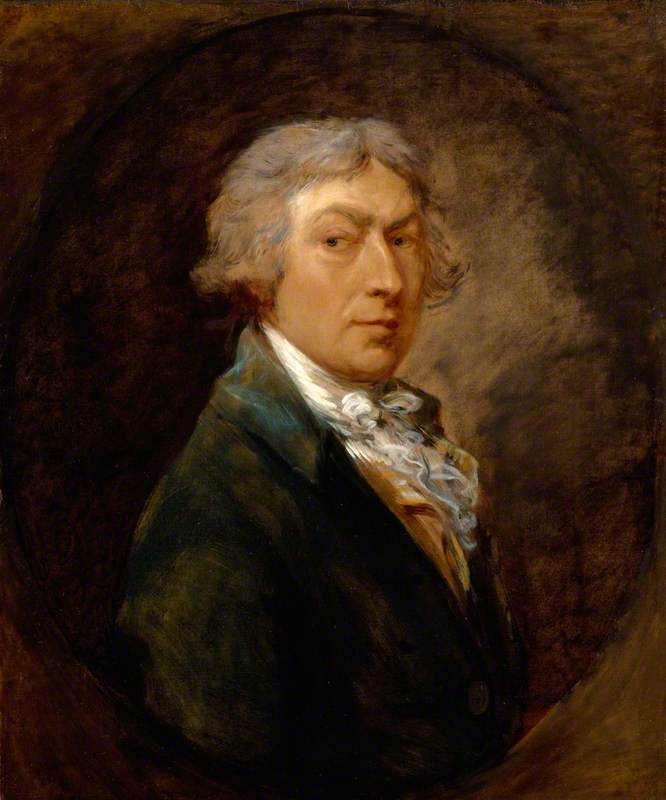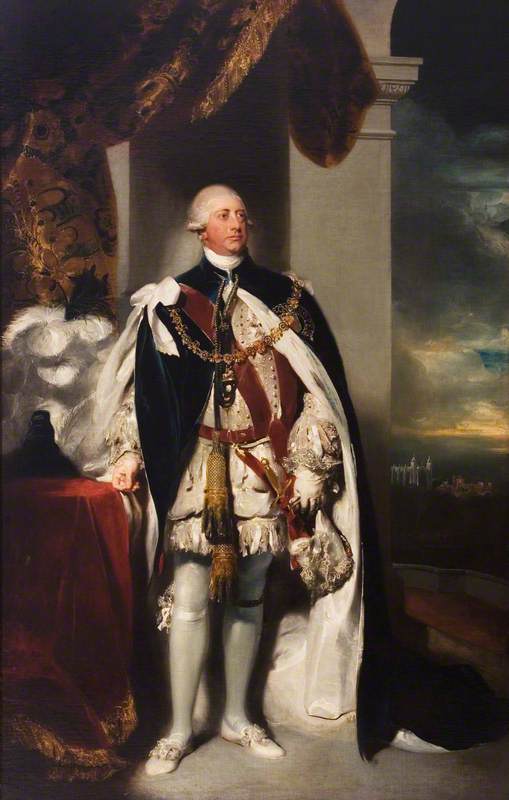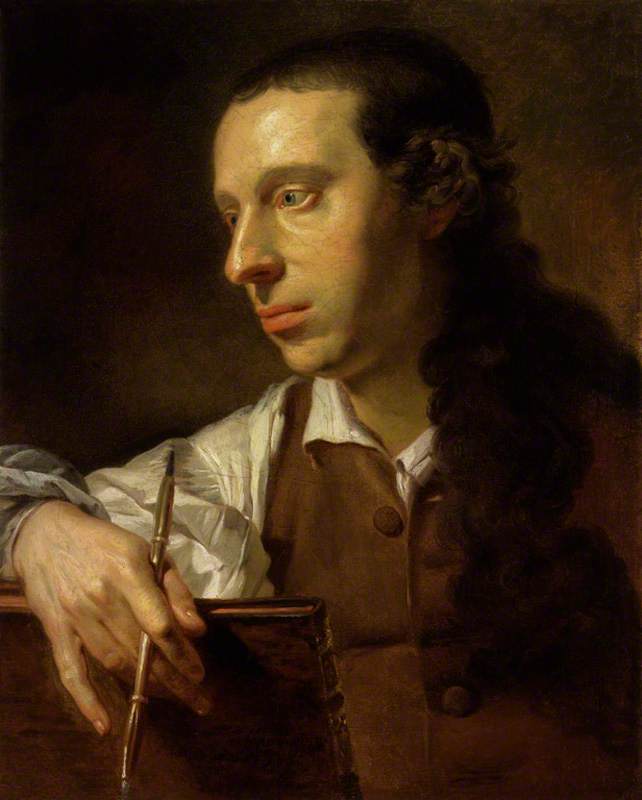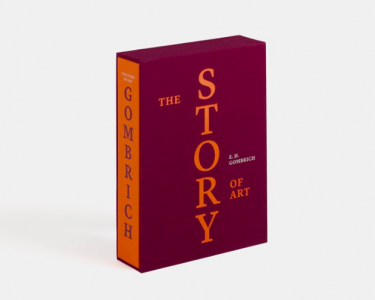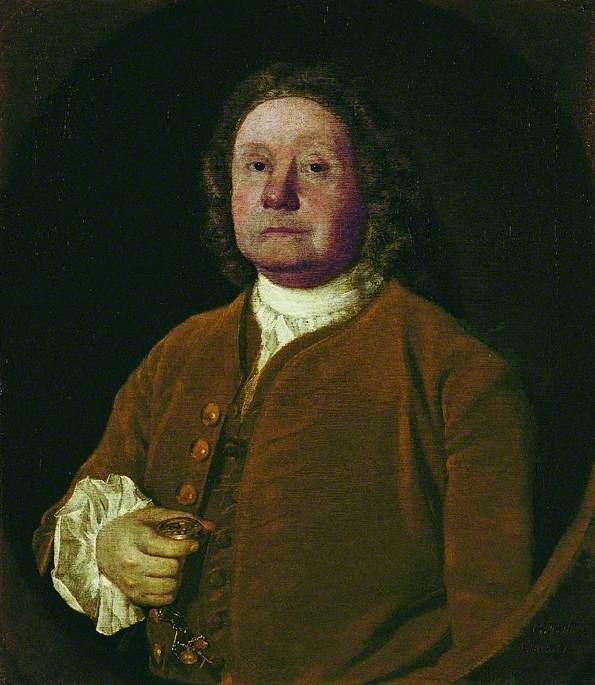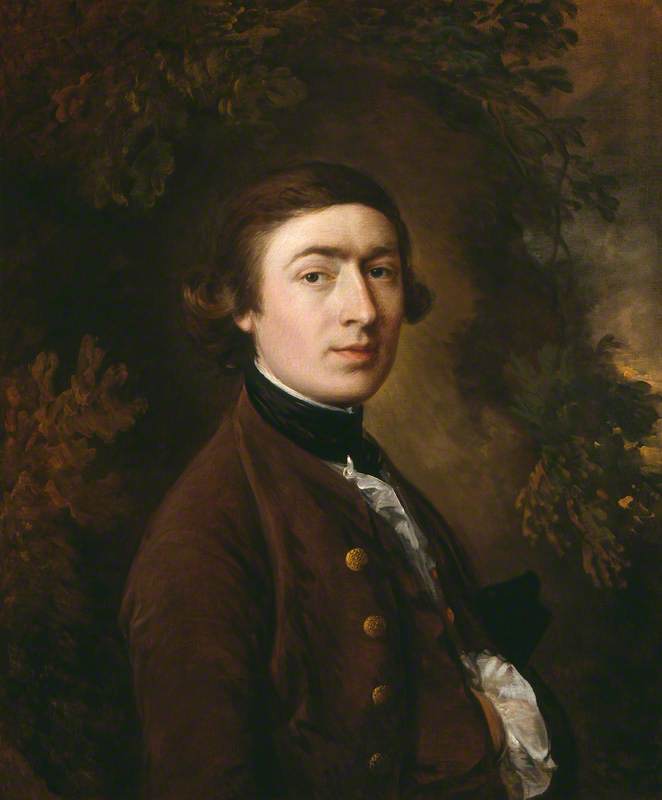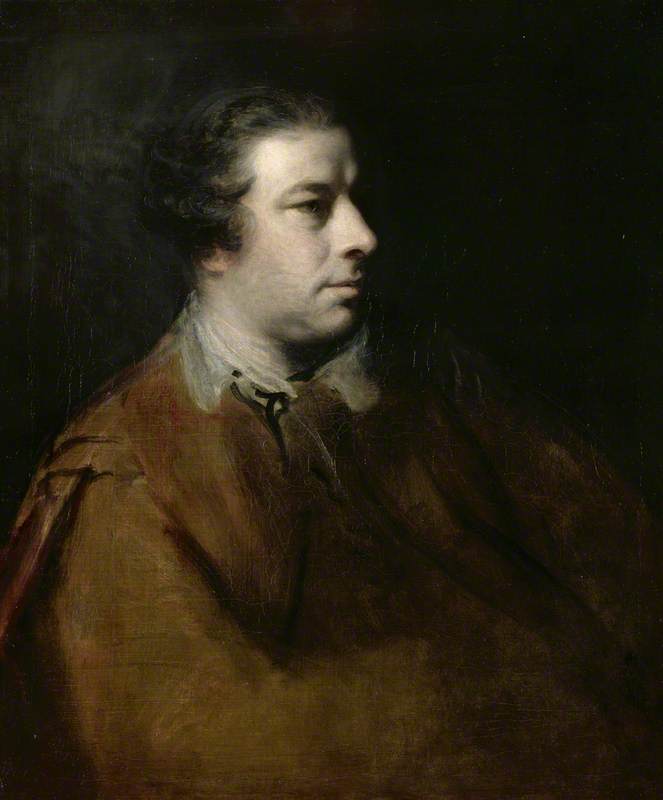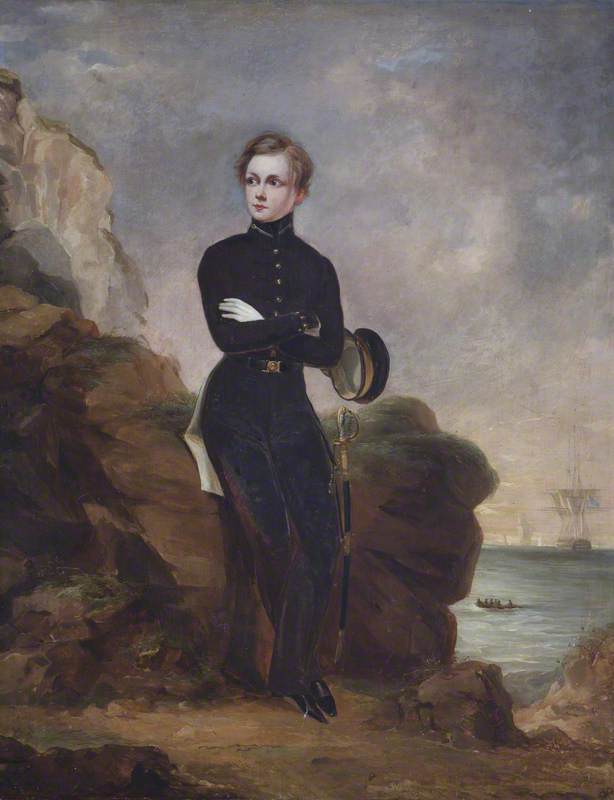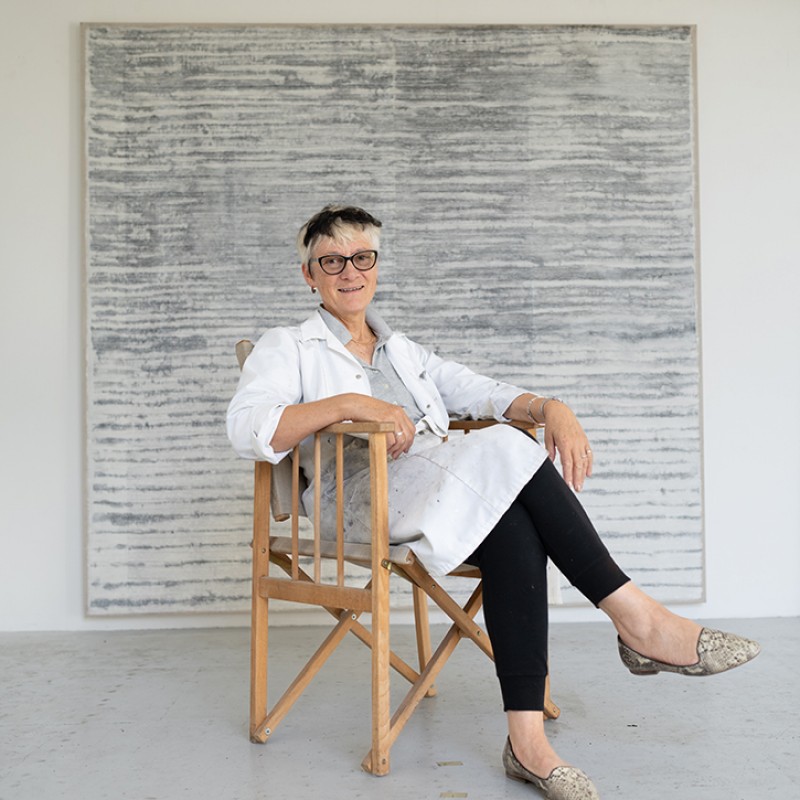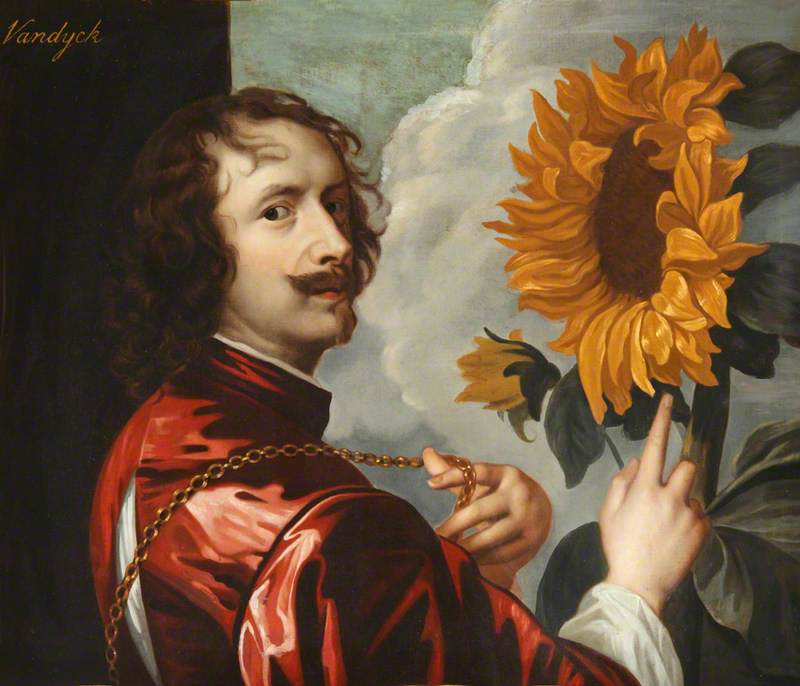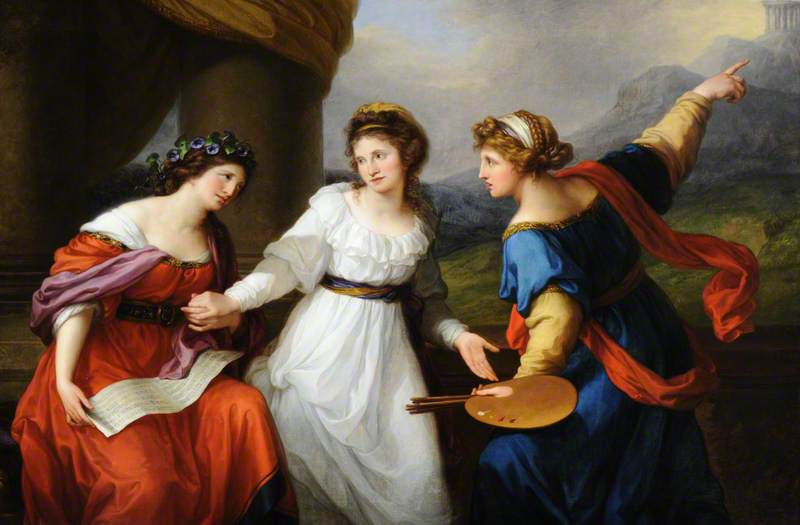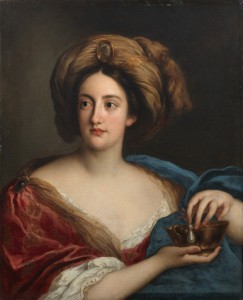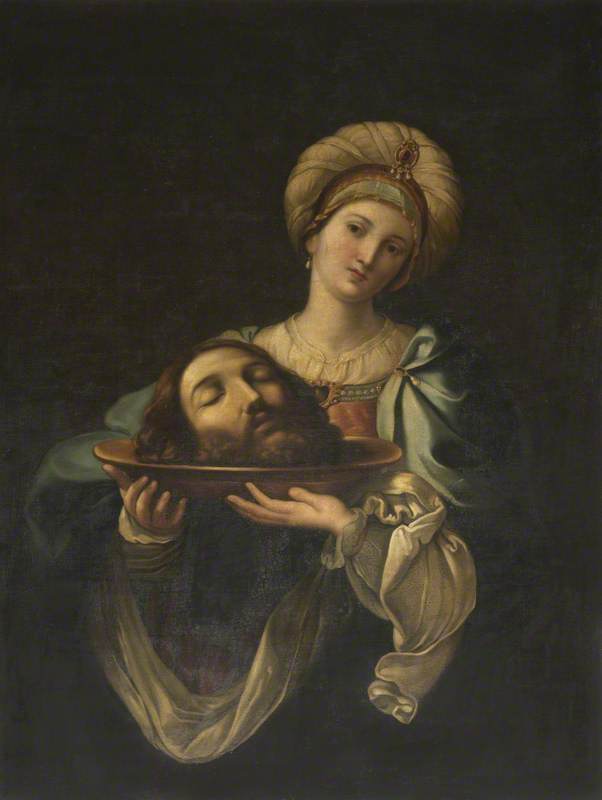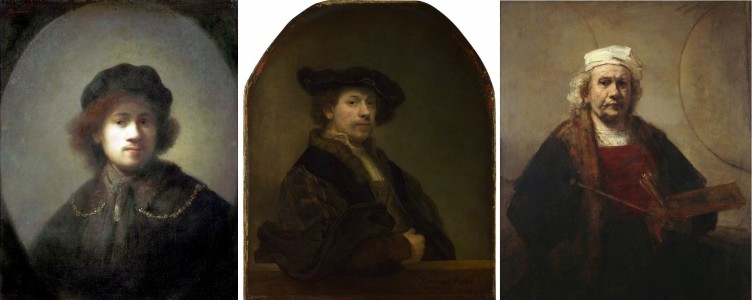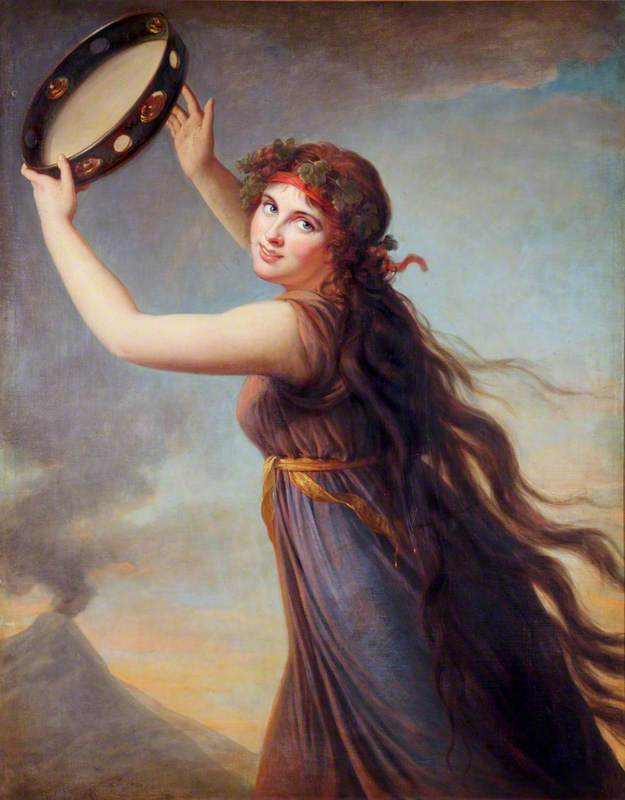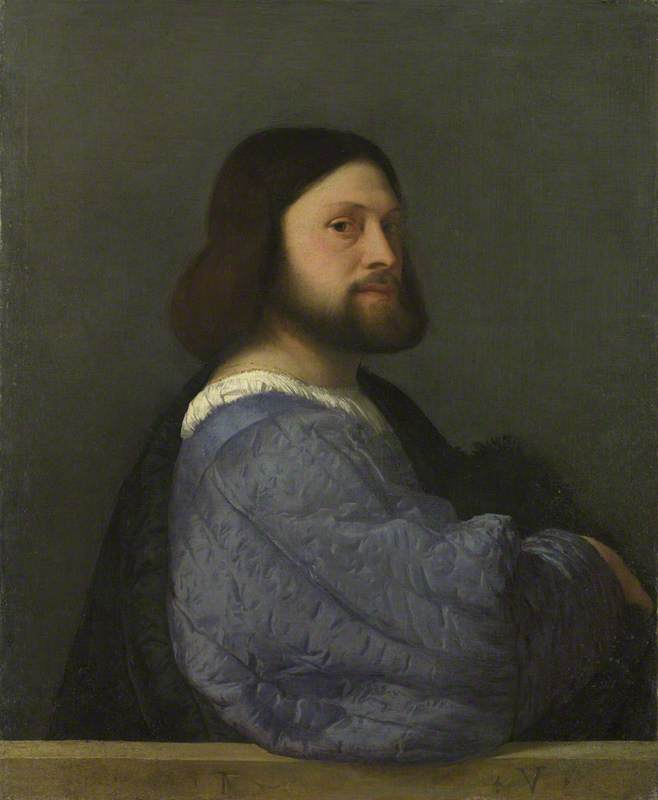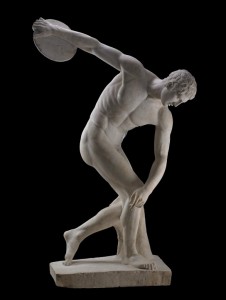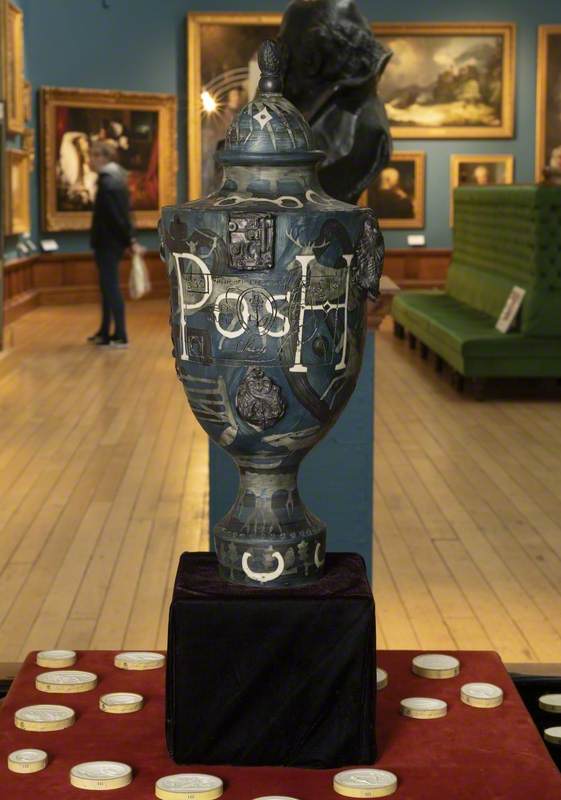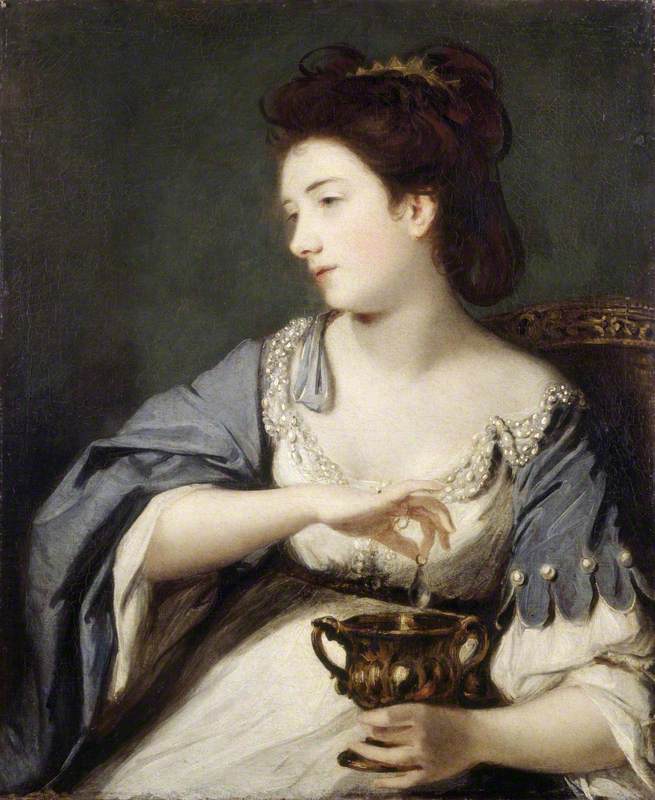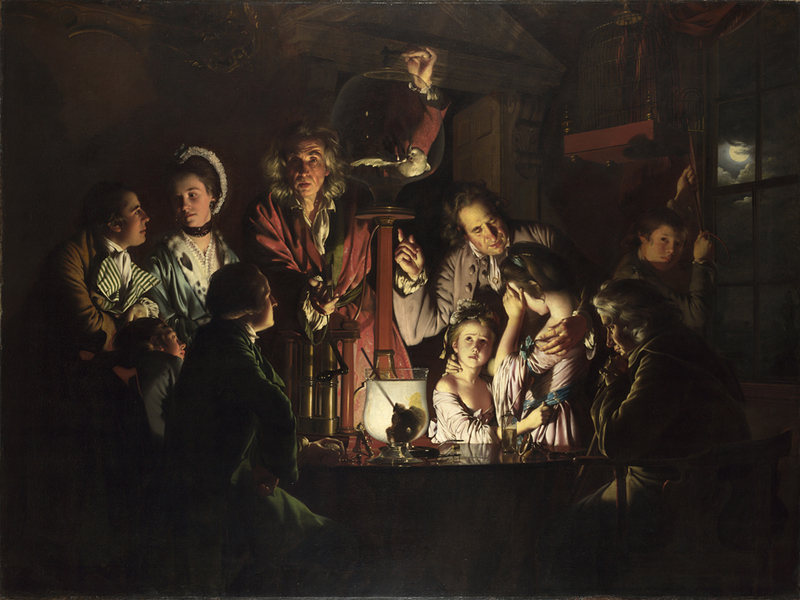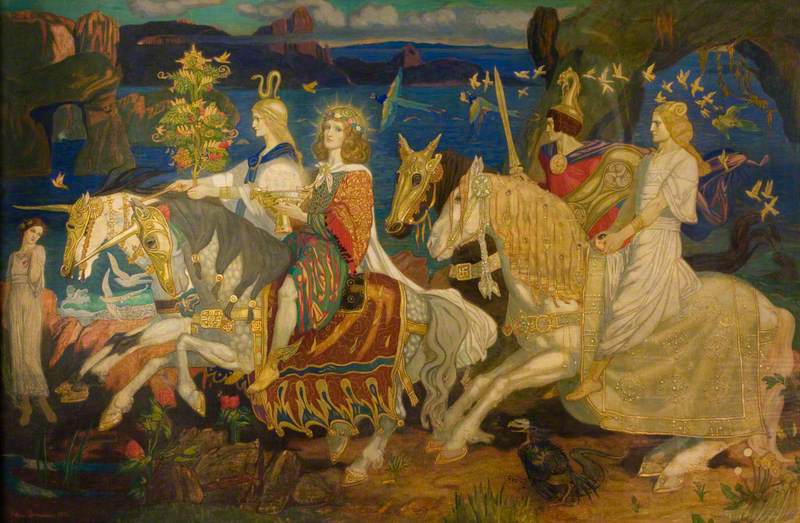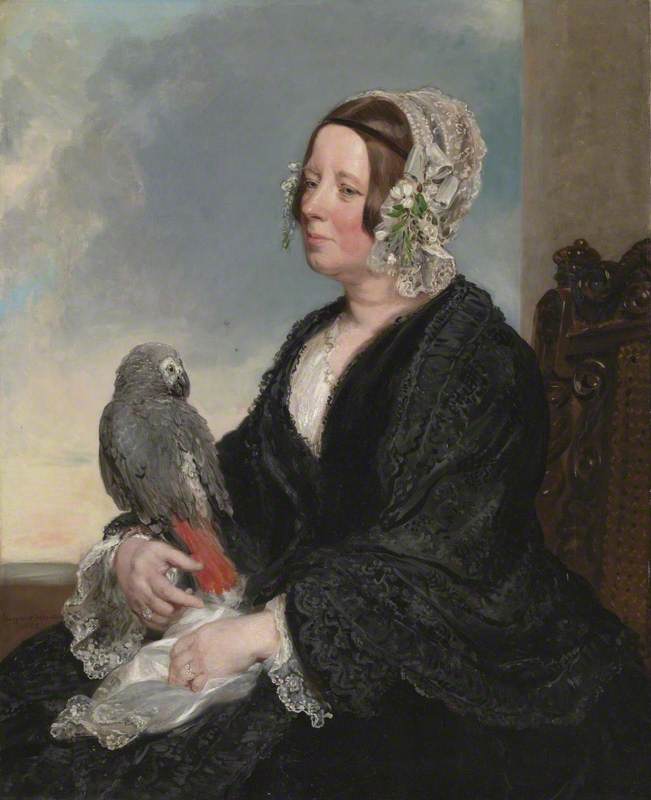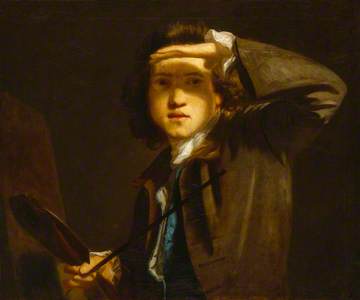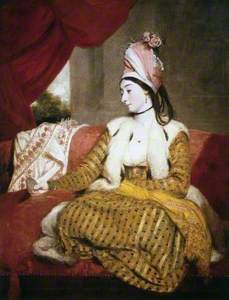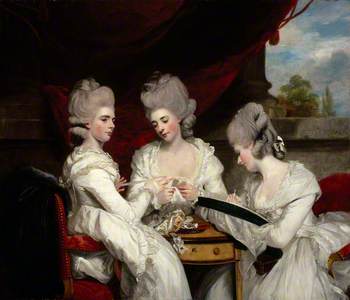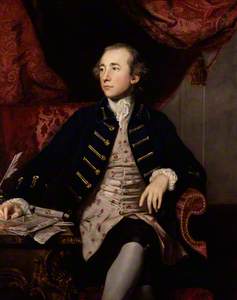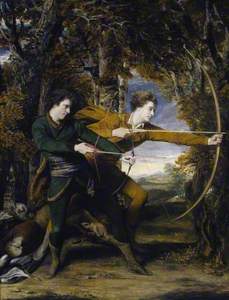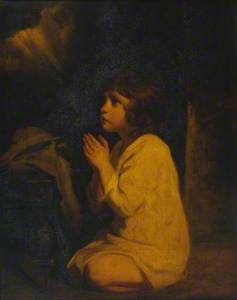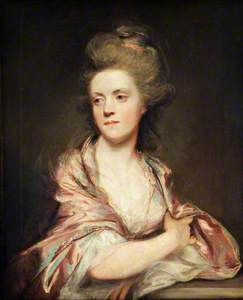Sir Joshua Reynolds (1723–1792) was one of the biggest names in eighteenth-century British art. He was most famous for his exquisite portraits, depicting the cream of Georgian society.
There are well over 600 works under Reynolds' name on Art UK – as with many of the most popular artists, some are copies of his works, or by people who worked in his studio, but many are authentically by him. Here's a look at some of the highlights in UK public collections.
Self portraits
Reynolds painted many self portraits during his career – at least 27 are known. In this he followed in the footsteps of older masters such as Dürer and Rembrandt.
This early example was probably painted just before Reynolds went to Italy to study.
It was originally vertical in format but was cut down during the nineteenth century. The pose is also reminiscent of Rembrandt's early self portrait etchings, where he experimented with facial expressions to hone his craft.
This self portrait was probably painted soon after Reynolds set up a studio in London in 1753. He had spent the previous three years studying art in Italy.
The personal connections and artistic ambitions Reynolds developed when he was abroad served him well. These years marked the beginning of a carefully managed and hugely successful career. This self portrait, which again deliberately echoes famous images by Rembrandt, signals his artistic aspirations. Such posturing struck a chord with London's fashionable and aristocratic society, who wanted portraits that would flatter their growing cultural pretensions.
This next self portrait is a great example of Reynolds' 'Grand Manner', which borrowed from classical antiquity (see the bust) and the Old Masters (he is dressed and posed like a Rembrandt portrait) to fill the portrait with moral and heroic symbolism.
It is in the collection of the Royal Academy, which he had helped to found in 1768. He was appointed its first President, and his annual lectures (Discourses on Art) had a huge impact on the contemporary theory and practice of art.
As Britain's leading portrait painter, Reynolds had raised the status of portraiture through his long and illustrious career. But later on, he continued to experiment with depicting himself, including this portrait of himself as a deaf man.
Reynolds really did lose his hearing, so rather than this being a theoretical depiction, it was a considered statement of truth.
Similarly, this painting in the collection of Kenwood was the artist's penultimate self portrait, completed in 1788 when he was around 65.
It is one of many versions of this composition – likely painted by the artist and his studio assistants. It shows Reynolds wearing a powdered wig, perhaps to conceal his thinning hair, and wearing spectacles – the 'wig spectacles' he is wearing were specially designed to sit comfortably over a man's wig.
By 1783, Reynolds had begun wearing glasses after suffering a stroke the previous year, which caused inflammation in his eyes. A year after this work, in 1789, he experienced a sudden blindness in one eye and by January 1791 he had almost completely lost his sight.
The Georgian elite
Reynolds made his name by painting the most famous (and most wealthy) people of the age. When he returned from studying in Italy in the early 1750s, he set up a studio in London. This portrait in particular made his name in the capital.
Captain the Honourable Augustus Keppel, 1725–1786
1752–1753
Joshua Reynolds (1723–1792) 
The subject is Admiral Augustus Keppel, at the time, a rising star in the Royal Navy. Reynolds took great pains with the composition, scraping off paint many times to make changes. The cliff on the left is painted over a more conventional earlier design of a classical column.
Keppel's pose is notable – Reynolds seems to have been inspired by the classical statue the Apollo Belvedere (which he would have seen in Rome) or by a seventeenth-century statue of Apollo by the French sculptor Pierre Legros. The background of tempestuous sea, stormy shore and wreckage anticipates the Romantic movement. The picture remained in Reynolds' studio for years where potential patrons could see it.
Other portraits of famous Georgians followed. Reproduced many times, Reynolds' portrait of Dr Johnson gives the subject a serious and scholarly air.
Reynolds' 'Grand Manner' style was in tune with the discoveries of classical antiquity that were occurring at the same time. One of the most distinguished antiquaries of the age was Sir William Hamilton, British diplomat and collector (and husband of Emma, who was Nelson's mistress).
Hamilton's collection of Greek and Etruscan vases was bought for the British Museum. In Reynolds' portrait, Hamilton holds the first volume of a lavishly illustrated series that celebrates his achievements as a collector, and some of his antiquities that he gave to the British Museum are shown beside him – a synthesis of Reynolds' enthusiasm for symbolism and Hamilton's enthusiasm for collecting.
Another major figure in London society was the naturalist and patron of science Sir Joseph Banks.
Banks was President of the Royal Society from 1778 to 1820. He sailed with Captain Cook to the Pacific on his first voyage aboard the Endeavour (1768–1771), and compiled a unique natural history collection – the freestanding globe in this portrait refers to his travels in search of botanical studies.
Reynolds painted many portraits of his friend David Garrick, the dominant figure in eighteenth-century London theatre. In these portraits, Garrick is normally shown as an actor, perhaps dressed as a specific character or playing a particular role. The most celebrated example of this type, Garrick Between Tragedy and Comedy, is in the collection of Waddesdon Manor and is one of the most important paintings of Reynolds' career.
David Garrick (1716–1779), between Tragedy and Comedy
1760–1761
Joshua Reynolds (1723–1792) 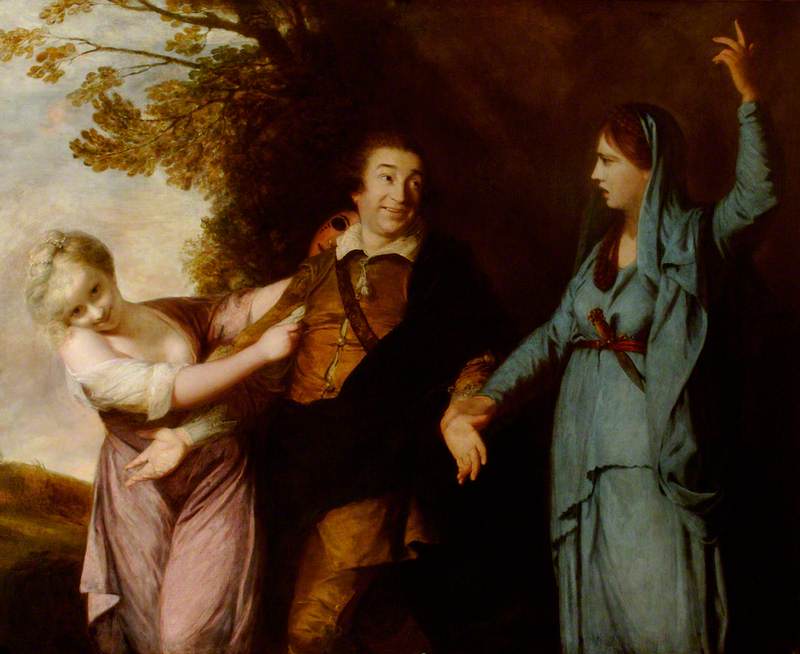
This more conventional portrait shows Garrick composing a prologue to be delivered at the start of a performance. It was exhibited at the Royal Academy in 1776, the year of Garrick's retirement.
David Garrick (1717–1779): ‘The Prologue Portrait’
c.1776
Joshua Reynolds (1723–1792) 
However, perhaps the ultimate signifier of Reynolds having 'made it' is his depiction of the king and queen themselves.
These paintings of George III and Charlotte are in the collection of the Royal Academy. The pair of full-length portraits of the enthroned king and queen were commissioned to be shown at the first Royal Academy exhibition to take place at Somerset House in 1780. There are many copies of them throughout the country that were made by Reynolds' studio.
The very name of the new institution linked Reynolds and his circle to the establishment and came with royal approval. This can be seen as part of the cementing of the Hanoverians' image as the 'true' rulers of Britain following the Jacobite risings earlier in the century. As with the establishment of institutions such as the British Museum (1753) and the Royal Academy (1768), it was part of a wider move to establish what 'Britain' was as a nation – as opposed to England, Scotland, Wales and Ireland.
Georgian ladies
Aristocratic ladies wished to be flattered, and Reynolds was a master at this. As well as conventional portraits, he was also at home presenting his sitters as figures from classical myth or legend.
Reynolds largely based his composition of Lady Cockburn (1749–1837) with her three infant boys on Van Dyck's Charity (1627–1628, also in The National Gallery).
Lady Cockburn and her Three Eldest Sons
1773
Joshua Reynolds (1723–1792) 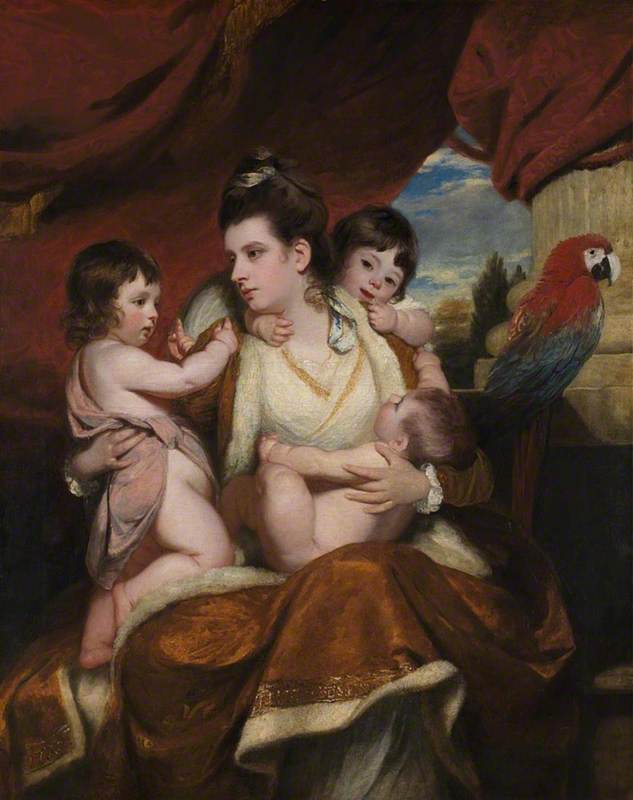
It combines a portrait of an individual with the personification of one of the three theological virtues, often shown as a mother caring for her children. The child kneeling on Lady Cockburn's lap is an almost direct copy of Cupid in Velázquez's The Toilet of Venus (known as the Rokeby Venus, also in The National Gallery). The macaw is probably Reynolds' own bird – his housemaid hated it, but it used to perch on Dr Johnson's wrist!
Mrs Mary Robinson (1758–1800) earned the nickname 'Perdita' from her memorable performance in Shakespeare's The Winter's Tale at the Drury Lane Theatre.
It was that performance that attracted the attention of the 17-year-old Prince of Wales (later George IV) in 1779, and she subsequently became his first mistress. As well as Reynolds, with whom she became friends, she was painted by Gainsborough and Romney.
Jane Maltass was born in Myrna, Turkey in 1763, the daughter of William Maltass, a merchant who traded with the East through the Levant company. She married George Baldwin who became British Consul-General in Egypt.
Reynolds painted her here in a Persian-derived costume, consistent with the fashion for depicting sitters in fancy dress. Mrs Baldwin wore this costume on several occasions, including a ball in London given by the king.
The Ladies Waldegrave was commissioned as a portrait of Lady Charlotte Maria, Lady Elizabeth Laura, and Lady Anna Horatia Waldegrave, the daughters of James Waldegrave, the 2nd Earl Waldegrave and his wife Maria Walpole. This was certainly a calculated commission, and its prime intent was to attract attention to the three marriage-aged girls.
The painting has often been discounted in scholarly circles as a luxurious yet vapid portrayal of socialites posed as the three Graces, although they are in fact portrayed as the Fates of Greek myth – perhaps a cynical social commentary on the nature of the commission, but it was also a respectful allusion to the power these women held in controlling their own destinies. Perhaps like the ending of a Jane Austen novel, Elizabeth married her cousin, the Earl Waldegrave, Charlotte the Duke of Grafton, and Anna married the Admiral Lord Hugh Seymour.
This portrait of Lady Charlotte Hill, Countess Talbot, shows her dressed in a robe inspired by Grecian dress, pouring oil onto burning coals in a sacrificial tribute to the Roman goddess Minerva. It was probably commissioned as a pairing to her husband's portrait by Pompeo Batoni, which he sat for on his Grand Tour.
In his use of colour and composition, Reynolds is alluding to the work of the Renaissance painter Titian, a universally admired Old Master. The work was exhibited at the Royal Academy's annual exhibition in 1782, and engraved in mezzotint, meaning that the image circulated far beyond the reach of an oil painting.
A few unexpected details
Other than his mastery of portraiture, there are a couple of details in some of his paintings worth a mention. These next two works are of Nelly O'Brien.
She was a well-known beauty and courtesan, and this gives some insight into the morals of the Georgian period. The work in the Wallace Collection was painted when O'Brien had given birth to a son by the 3rd Viscount Bolingbroke.
Nelly was a close friend of Reynolds, and sat for his 'fancy pictures'. In the work from The Hunterian in Glasgow, she is depicted with one arm resting on a stone pedestal carved in relief with Danaë receiving Jupiter as a shower of gold coins.
Danaë was a symbol of chastity and virgin conception through divine intervention, so possibly Reynolds was using this with some degree of irony, based on O'Brien's well-known reputation as a courtesan.
Moving to more serious matters, it is difficult for viewers today to look at works created in the eighteenth century and understand the level of inherent racism that was commonplace and acceptable. This is true of Reynolds' portrait of John Manners, Marquess of Granby.
John Manners (1721–1770), Marquess of Granby
1767–1774
Joshua Reynolds (1723–1792) 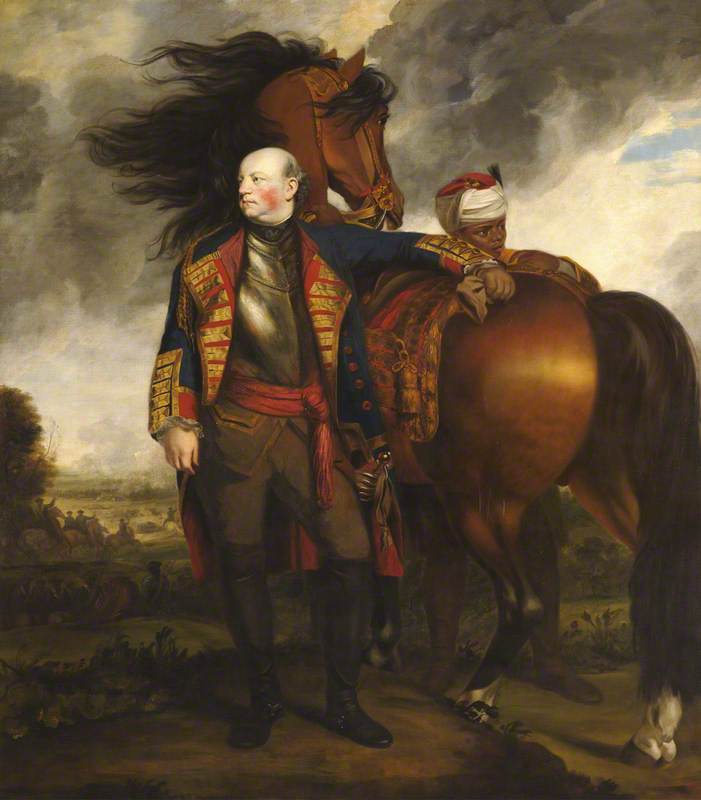
The composition focuses on the Marquess and his horse, but also features his 'Black servant', which slightly glosses over a large and important issue – that of the importance of the slave trade in Britain at the time. In Georgian Britain it was rare for people of colour to be depicted as anything other than exotic props in the background of portraits of wealthy white patrons – the inclusion of this unnamed (and indeed unmentioned) servant is not meant to depict him as a person, but as part of the backdrop.
However, in another of Reynolds' works, he unusually centres a person of colour as the main focus of the portrait.
This work in the collection of Knole is a portrait of Huang Ya Dong. It was painted for the 3rd Duke of Dorset.
Huang had travelled to Britain in the mid-1770s with John Bradby Blake (1745–1773), who was engaged in trade for the East India Company in Guangzhou (Canton), and who collected seeds and plants for medicinal or economic use, sending them back to Europe. Huang's botanical knowledge provided first-hand information to British naturalists.
During his British journey Huang met all sorts of interesting people, from the naturalists Mary Delany and the Duchess of Portland (discussing Chinese plants and their uses with them) to Josiah Wedgwood (with whom he discussed the manufacture of Chinese porcelain) and to the physician Andrew Duncan (to whom he explained the principles of acupuncture).
At this time Chinese visitors to Europe were very rare, and Huang was one of the first to visit Britain. A letter thought to be written by Reynolds suggests Huang was about 23 when this portrait was painted. A 1784 letter written by Huang in Guangzhou recalls 'the pleasure of dining with you in company with Captain Blake and Sir Joshua Reynolds'.
Perhaps in a similar vein, Reynolds also painted the Polynesian Omai, who visited Britain in 1773, although this artwork is in a private collection.
British government gives 11th-hour permission for Joshua Reynolds's Omai to leave UK https://t.co/7ieh9Yetv0 pic.twitter.com/p6NGe7WcEt
— The Art Newspaper (@TheArtNewspaper) February 25, 2018
However, while Reynolds clearly revelled in the challenge of painting these men, in both portraits we should perhaps be wary of assuming there was not some level of inherent racism, treating the sitters very much as 'other' to that of Georgian society.
Joshua Reynolds' huge body of work, and his gift for self-promotion coupled with his innate talent, means that he remains one of the eighteenth century's titans of British art.
Andrew Shore, Head of Content at Art UK
